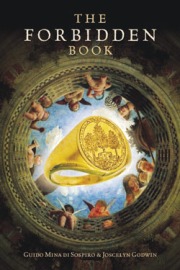 Film should aspire to the condition, or effect, of ancient Greek drama, which displays a philosophical approach to art. Uniting moral seriousness with the Hellenic imagination for myth, tragedy probes and forges a unique conceptualization of humanity, nature, and philosophy. Ancient drama explores the network of seemingly inexplicable, contradictory forces that govern the order of human activity by stressing the communion between artist, art, and spectator. Tragedy works toward resolving the most difficult problems of existence through a philosophical method of aesthetic-existential inquiry, or analysis.
Film should aspire to the condition, or effect, of ancient Greek drama, which displays a philosophical approach to art. Uniting moral seriousness with the Hellenic imagination for myth, tragedy probes and forges a unique conceptualization of humanity, nature, and philosophy. Ancient drama explores the network of seemingly inexplicable, contradictory forces that govern the order of human activity by stressing the communion between artist, art, and spectator. Tragedy works toward resolving the most difficult problems of existence through a philosophical method of aesthetic-existential inquiry, or analysis.
Tragedy elicits pathos on a grand scale, arousing fear and pity through audience involvement within the emotionally charged atmosphere of the mimetic spectacle. Tragedy seeks to resolve its conflicts by way of the illusory world created by artist and actor. The pleasure-cum-pain of tragic katharsis, that is, the purification of emotions occurring at the sublime, dread-inducing moment of the protagonist’s down fall, is possible only through audience identification and involvement within the events of the play. Thus, tragedy works only as the interplay of perspectives. As spectators, we witness our own Being within the existential plight of such characters as Oedipus, Antigone, and Electra. Through the optics of the tragic-aesthetic, we perceive and experience the world through a common attunement.
The tragic experience of sight, sound, and symbol uncovers “truth,” or more accurately, attunes humanity in such a way as to enhance its receptivity to a new form of fundamental intuitive knowledge, which is revealed within a collective psychical-physiological moment of supreme clarity. The truths of tragedy are never purely theoretical in nature, that is, formable truths with the undisputed veracity to serve as rigid “eternal” principles for a system of knowledge. Rather, these truths emerge from an intuitive capacity within humanity, facilitating the recognition and understanding of life’s “ultimate situations,” i.e., the acknowledgment that such phenomena as death, suffering, fear, and fragility cannot be surmounted, for these conditions alone guarantee the possibility of revealing the authentic meaning of human life and freedom.
Tragedy’s authentic influence is expressed within this communal, non-dogmatic, philosophical approach to art as a legitimate form of existential inquiry, which is to suggest that it is the experience of art that defines the essence of both the artist and spectator, situating them in a relation to truth’s uncovering. This important concern with “spectatorship” is expressed within the modern films of Pier Paolo Pasolini and Derek Jarman. As opposed to predicating their films on the axiomatic conception of truth, offering up rigid and absolute solutions to life’s most complex problems, they instill within the spectator a reverence for truth conceived as an ever-changing, communicable phenomenon, i.e., a living expression of the universality of humanity’s Being. Recognizing that only in connection with the Being of Others are we truly living and fulfilling life, both filmmakers demonstrate an acute awareness of the importance of interplay between art (film), artist, and spectator. They envisage communicability and discourse as essential elements to the understanding of art, truth, and the awareness of human essence.
Pasolini’s films are often categorized as works of “neo-realism.” We experience the visceral immediacy of his inventive storytelling as it unfolds within an experimental, narrative framework. Conversely, Jarman, whose more adventurous works embrace the spontaneity of the creative moment, is perhaps best described as a flamboyant “expressionist”. Although their filmic styles differ, the method by which they approach aesthetics and life remains strikingly similar. Working to modify the dominant Western attitude toward truth and reawakening the mythic sense of wonder at the vast complexities of existence, their films call us to enact our lives philosophically. Their works often focus on the many problems engendered by “theoretical optimism,” which is humanity’s overconfidence in the ability of ratio-scientific-logic to categorically explain the world, e.g., the blight of political absolutism and the tyrannical victimization of the marginalized, disenfranchised segments of the populous. Tracing the innumerable, distressing social conditions, which haunt our experience of freedom, to the negative influence of rationalism, both filmmakers portray the search for, and reclamation of, authentic Selfhood within a harsh and segmented world where human identity is lost amid gender-metaphors and asymmetrical struggles for power.
Most filmmakers are oblivious to the important role of the spectator within the process of art. In rare instances when a filmmaker does consider the audience, more often than not, that filmmaker wrongly interprets the artist’s role as one whose duty it is to think for the viewer. Before clicking off one frame, most directors know exactly what their film will say and where it will transport the viewer emotionally and psychologically. Hence, the spectator becomes a mere “thing,” an impersonal entity to be manipulated, denied participation in, and access to, the opening of truth within the genuine experience of film, which is the aesthetic dialogue growing out of the philosophic relationship of artist and spectator – the true spectacle of cinema. When reading our own history within the greater context of the historicity of humanity as a whole, we come to understand that truth is never found in the isolation of a solipsistic moment, within the interiority of a closed individuated, consciousness – Truth happens only as a result of our worldly communications!
Philosophical analysis is demanding. It is never simply a process of question-and-answer. First, it requires the identification and diagnosis of a problem. Next, it requires reflection on the most effective way in which to address the problem. Finally, it requires asking the appropriate questions. Authentic thinking is a careful and thorough methodological process of arduous reflection. When thinking philosophically, we simultaneously discern and clarify the problems while perfecting the line of inquiry we follow in search of answers.
With such understanding, we must be highly skeptical of the filmmaker who believes to have categorically answered the questions that first gave rise to the film. In such instances, we are right to ask with skeptical concern: Around what conception of truth is the film organized? Is the film asking the “right” questions, the important questions, those concerned with value, morality, human worth, aesthetics, and secular spirituality in an era descrying the fall of onto-theology? These are philosophical matters, the type of quandaries that elude easy answers and defy complete explanations, the very problems that push hard against the limits of our understanding and drive us to the periphery of the circle of knowledge, the point at which “hard” logic annihilates itself.
When an artist believes to have adequately solved such problems, advertising a privilege to the unquestionable notion of universal truth, she is, in a dogmatic manner, corrupting the art of film. For neither our questions nor answers to life’s most important problems arrive in neatly wrapped packages. Accordingly, any attempt at marketing and selling truth, as a ready-made, commodity of an absolute nature, is a seriously misguided and dangerous endeavor. Yet this is precisely what the commercial film industry is doing, and worse.
With this in mind, the cinema would greatly profit from the insight of Nietzsche and Heidegger, the celebrated non-dogmatic philosophers. Both thinkers vehemently opposed any form of systematized, absolutist thinking, and instead employed a hermeneutic methodology, stressing intense and ongoing inquiry. They adopted a mind-set in which every assertion was open to assessment and reassessment. Truth became a malleable concept within their works – a multi-perspectival interpretation of life. Viewing the world as a chaotic, irrational, “monster of energy,” forever in a state of change and flux, they found naive the belief that theoretical-rational inquiry alone could produce anything resembling a secure and definitive account of existence, as truth was conceived as a process rather than a destination – a temporal movement of humanity’s destiny towards the perfection of its spirit, or Being. As opposed to the formulaic knowledge of dogmas or articles of religious faith, truth for these thinkers sprang from the historical context of the lived experience.
To embrace such an unconventional and radical philosophical attitude toward the pursuit of truth opens one to the possibility that at any moment within the filmmaking process something new might be discovered, something more primordial might manifest. If an artistic model exists for the filmmaker, it must oppose any categorical declarations of eternal truth, which is to say, taking formulaic truths for exclusive truth. According to film scholar Ray Carney, filmmaking represents an attempt to learn something new, forcing us out of our “everyday” mental and emotional ruts. If this is so, filmmakers would do well to draw “artistic” inspiration from the works of directors Pasolini and Jarman while reflecting on the problems of existence in a more “philosophical” manner, i.e., with a critical mindset that embraces the enigmatic aspects of life, in the tradition of Nietzsche and Heidegger. To approach life in such a way, is to understand that authentic existential inquiry asks more questions than it can ever hope to answer, and that the answers it does uncover, can never serve as ready-made, dogmatic solutions to life.
When aesthetic creation is enacted as “perceptive” philosophical discourse, the uncovering of truth’s phenomenon is elicited, thereby broadening, deepening, and enhancing our authentic understanding of life as an evolving, dynamic process of growth. So, as the film’s closing credits roll, amidst the deafening applause of its glamorous premier screening, the quest for “knowledge” has really only just begun.
James Magrini teaches Western philosophy and ethics at College of Dupage in Illinois and publishes on philosophy, art, and education in such journals and periodicals as Philosophy Today, Philosophical Writings, Education, Philosophy, and Theory, and American Atheist.













